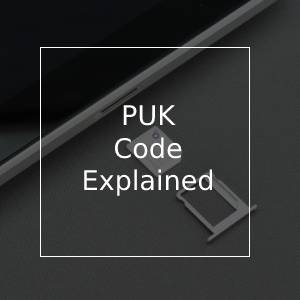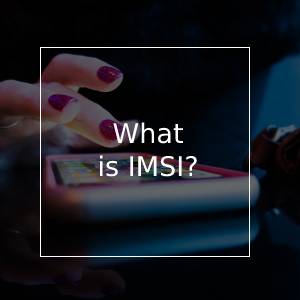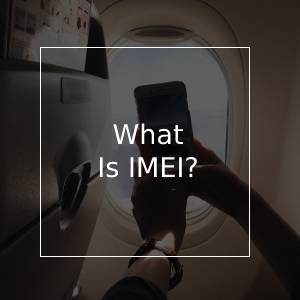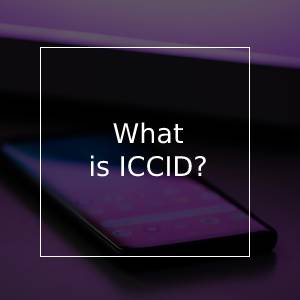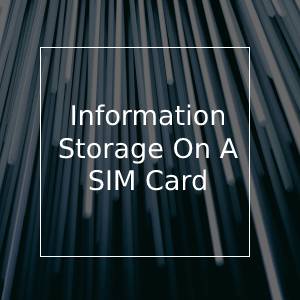What Is a USSD Code?
In previous articles, we have already covered different codes and numbers such as the IMEI, ICCID, IMSI, and more. However, you may be surprised that there are many more!
Maybe the one we will talk about today seems familiar to you. It is because, unlike the others mentioned above, it is possible that at least once in your life you have used a USSD code.
Let’s continue reading and learn what exactly is the USSD code and how companies can make use of it to make our lives (and their job) much easier!
MMI: Man-Machine Interface
Before delving into the main topic, we consider wisely starting from the beginning, explaining where USSD codes come from. MMI stands for Man-Machine Interface code. It is a code that contains *, numbers, and #. It lets the user operate a machine tool, to make a connection with a network or another service.
There are three main types of MMI codes, which are Supplementary Service (SS) codes, Manufacturer-defined MMI codes, and USSD codes.
What you need to know about USSD codes
Let’s start by stating that USSD stands for Unstructured Supplementary Service Data. To understand what it is, think that this code works similarly to a text message. An SMS (Short Message Service) delivers a message to a receiver (a person), and then that person can send a message back. The USSD sends a message, but will not be received by a person. It will open an interactive menu that works as a communication channel.
In other words, these messages can establish real-time communication between your cell phone and a server, providing immediate feedback. USSD codes have a simple structure, which usually has * and #.
It has several uses in different industries that we are going to cover later. However, we are sure that at least once you have used a USSD code, maybe without knowing its name.
Let’s think, have you ever sent a code that starts with a * and ends with a #? Maybe to check your monthly balance. If so, then you used a USSD code! That is right; these types of codes are very useful for networks to allow their users to know information about their accounts.
Most of the time, when you type a USSD code, a pop-up menu will appear. Then you can interact and go through the menu using other codes, generally numbers.
That is one of the differences between an SMS and the use of USSD codes. Although both are used to send information, the latter works in real-time. Besides, USSD codes run on the network. It means that you do not need an application on the phone to use it, which is useful if a person has a cell phone with limited storage space.
However, of course, both (SMS and USSD) will happen only under a network connection. It means that to send them you need to have an active SIM card to be able to use those services.
How USSD Is Used
Now let’s take a look at the different uses that USSD codes have. As we mentioned before, several industries use these codes for different purposes. Let’s learn how:
Mobile banking
Different banks around the world started using this option, as an alternative to the banking apps, since these need internet access to be used. One of the most used codes is *99#, however, it can be different depending on your financial entity. This USSD code allows users to fund transfers, check their account balances, and generate bank statements. Again, the services may be different from one bank to another.
Network configuration and requests
Sometimes after you insert a SIM card, you need to configure your device on the network. Network operators to facilitate this process to users use USSD codes. They can also get access to other services. For example, if the user needs to request account balances.
Customer update requests
Systems such as ERP (Enterprise Resource Planning) and CRM (Customer Relationship Management) may use USSD codes to request customers for updated information.
Marketing surveys
Since the USSD codes provide an interactive menu to the user; organizations and companies to apply marketing surveys can use them. In this way, they will get responses immediately. It is even better than doing only surveys, because people tend to use phones all the time, and companies can get feedback in a shorter time.
Callback services
Another use of the USSD codes can be by insurance providers or financial companies, which provide a kind of service to their customers. They can use the code to enable their customers to ask for a callback if they are interested in the services. It is much faster and efficient than waiting for customers to call them.
Order confirmations
This applies to food delivery providers, which are very popular around the world. They can use USSD to communicate with customers when they place orders.
Coupons and vouchers
Traders can make use of the USSD codes if they need to let customers know that they have special offers. The same can be made if they want to send coupons and vouchers.
FAQ’s
What does USSD stand for?
It stands for Unstructured Supplementary Service Data.
What exactly is a USSD code?
A code lets you see an interactive menu with which you can send information to your network or service provider.
What is the structure of a USSD code?
It usually starts with an asterisk (*), followed by a series of numbers and finishing with a pound key (#).
Do I need data to send a USSD message?
No, you do not need to use the internet. You only need to have coverage on your mobile phone to send a USSD message.
Now you have a better understanding of what a USSD is. You probably noticed that it can be used in different situations. We are sure that you will remember this information the next time that you request information about your balance or make a transaction from your bank account!




